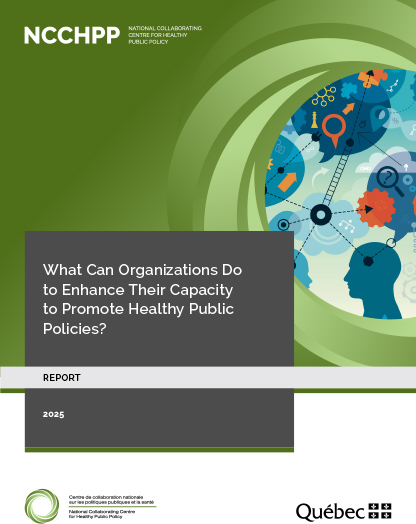What Can Organizations Do to Enhance Their Capacity to Promote Healthy Public Policies?
This report was developed by the National Collaborating Centre for Healthy Public Policy (NCCHPP).
Key messages
- Healthy public policies (HPPs) refer to policies that extend beyond the boundaries of the health sector to include actions in other sectors, such as the economy, education, transportation, or the environment. The primary goal of HPPs is to improve population health by addressing the social, economic, and environmental determinants of health. By creating environments that promote healthy living and reduce health inequities, these policies have a positive impact on population health outcomes.
- This report offers avenues for reflection and action that public health decision makers, managers and professionals can adapt to their specific contexts to more effectively influence and implement HPPs.
- The analysis presented in this report is based on the scientific literature and highlights a variety of strategies and tools that public health organizations can implement. The report’s main findings are organized according to five key dimensions of public health competencies that support efforts to build capacity to promote HPPs:
- Partnerships: Collaborating with intersectoral actors is crucial to promoting the implementation of HPPs.
- Organizational structures and resources: Sustainably funding public health initiatives and establishing teams dedicated to HPPs are key activities for strengthening capacities.
- Workforce: Training professionals to promote HPPs and fostering collaboration within teams are key factors for building capacity.
- Knowledge development: Collecting local data and making information accessible helps influence policy decisions.
- Leadership and governance: The commitment of leaders at all levels is essential to the success of HPP initiatives, with a focus on prioritizing health equity.


